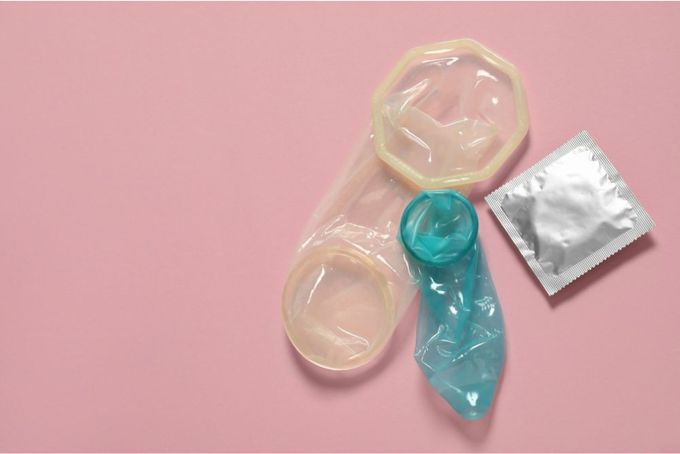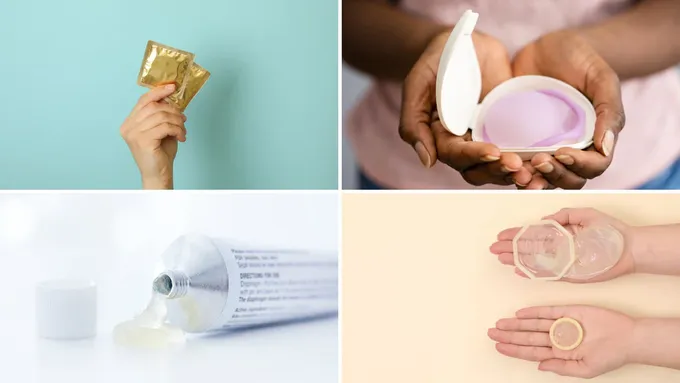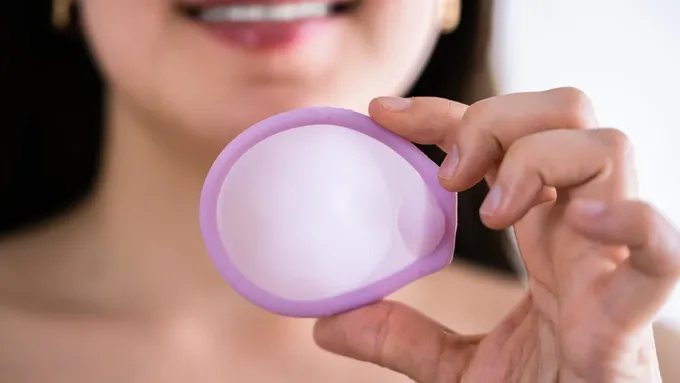Beyond Condoms. Everything You Need to Know about Barrier Methods
Updated June 19, 2025

Fertility awareness is an ideal form of birth control for so many of us. But there is one hang-up: what do you do during your fertile window? The safest choice is to abstain from intercourse, but we all know that it won’t work for everyone. Combining barrier methods with fertility awareness is a great way to play it safe. You can use them as a backup method or as your primary birth control during your fertile window.
Barrier methods are popular because they are non-hormonal and very reversible forms of contraception. Most barriers are easy to find and affordable, but some require a prescription and a larger cost up-front. Some barrier methods have a bit of a learning curve. It might be wise to practice using a new method outside of your fertile window.
Ultimately, contraception is a deeply personal choice, and it’s one that should be made between you and your partner. What’s most important is making an informed decision about what is best for your bodies and your reproductive goals. This blog post is an excellent place to start. Below, you’ll find a basic overview of common barrier methods, how they work, and their possible side effects.
Type of protection
Condom (Male or outer)
The condom is a thin layer of latex (non-latex options are available). Often, these are pre-lubricated, sometimes with spermicidal lubricant. I’ve been unable to find ingredient lists for most of the lubricants from popular companies. Some companies are more transparent about this.
How to use it: immediately before penetration, rolling onto the tip of penis
How it works: creates a barrier to keep sperm out of the body-- it is one of only two methods that prevent STI’s.
Efficacy: 85% typical, 98% perfect
Accessibility: very accessible (can be purchased in most grocery/ drug stores without prescription or insurance). It is relatively cheap, and a Dr can prescribe so that insurance will cover it.
Side effects: none (though some people may react to specific materials like latex or spermicides in lubricated condoms).
Condom (female or inner)
The female condom is a nitrile pouch that is inserted into the vagina. There is an inner ring to hold it in place and an outer ring to ensure maximum safety.
How to use it: immediately before penetration, insert the inner ring. Make sure to hold the outer ring during initial penetration.
How it works: it is a barrier to keep sperm out of the body- and is effective at preventing STIs.
Efficacy: 79% typical use, 95% perfect use
Accessibility: these might be hard to find in stores but are available online. If you have health insurance in the US, a doctor can write you a prescription, and your insurance company will reimburse you. These are more expensive than a traditional condom, at around $2.50 each.
Side effects: none
Spermicide
Spermicide is available in many formats, including gel, cream, suppository, foam, and dissolvable film.
How to use it: Spermicide should be inserted high up near the cervix before penetration. New spermicide must be applied after each instance of sex.
How it works: All spermicide works by immobilizing and killing sperm.
Efficacy: Perfect use 82%, Typical use 72%
Accessibility: Spermicide can be found in most drug stores and some grocery stores. It’s relatively affordable at around $10 per purchase, which may include approximately 12 doses.
Side effects: Some spermicides can be irritating, especially those made from nonoxynol-9. All spermicides can disrupt the natural flora of the vagina, sometimes leading to yeast or bacterial infection. Also notable- spermicide can make cervical mucus observations more difficult and possibly less reliable.
Watch our Youtube video: Using Cervical Caps & Spermicide Alongside Fertility Awareness for more information.
Diaphragm
A diaphragm is a shallow silicone cup, a few inches in diameter.
How to use it: Fill with spermicide and insert it into the vagina (actually relatively high up at the cervix) before intercourse
How it works: The diaphragm holds the spermicide in place to decrease the chance of any sperm entering the cervix.
Efficacy: Typical use 92%, Perfect use 96%
Accessibility: You need to be fitted for a diaphragm. This probably means a visit to your OBGYN. In the US, a prescription is required, and very few pharmacies can fill it. Most people end up ordering directly from a manufacturer. If you are insured, your company will reimburse you. Otherwise, a diaphragm costs around $90 but can be used for up to ten years (if it remains in good condition).
Side effects: some people have frequent UTIs or yeast infections, either from spermicide or introducing bacteria during insertion or removal.
Cervical Cap
A cervical cap is a small silicone cup that looks like a sailor’s cap.
How to use it: The cap is inserted over the cervix up to 6 hours before intercourse.
How it works: The cervical cap blocks sperm from entering the cervix.
Efficacy: Typical use 71%, Perfect use 86%.
Please note that these statistics combine cervical cap use with spermicide.
Accessibility: Like diaphragms, cervical caps must be fitted by a doctor. In the US, a prescription is needed, and most people order directly from the manufacturer. Insurance companies will likely reimburse you, but you can expect to pay around $100 upfront. This device can be used for up to 10 years if it remains in good condition.
Side effects: Spermicide use can cause yeast and bacterial infections in some people and make cervical mucus challenging to observe.
The Sponge
The sponge is an actual round sponge, soaked in spermicide, and placed just below the cervix.
How to use it: Before penetration, place the sponge high into the vagina to block the cervix. Use a new sponge each time.
How it works: The sponge should absorb sperm and prevent it from getting inside the cervix. The sponge is also soaked in spermicide, so any sperm that comes in contact with it will die.
Efficacy: 76% typical use, 88% perfect use
Accessibility: These are hard to find. You will most likely need to order them online. They cost around $4 each.
Side effects: As with any spermicide use, there are risks of bacterial or yeast infection and irritation.
Withdrawal
Withdrawal - yes, the pull-out method
How to use it: Remove the penis from the vagina before ejaculation. Ensure that no semen touches the vulva. Between rounds, urinate and wash the penis.
How it works: Withdrawal ensures that sperm cannot meet egg.
Efficacy: 78% with typical use in the interest of complete informed consent, the withdrawal method has not been well studied. There are currently five studies on this method. In some of the studies, it was found that sperm can survive in pre-ejaculate (which would render this method less effective). In other studies, no living sperm was found in pre-ejaculate. We need more information.
Accessibility: This method is free but requires a person to be very in tune with their body sensations and very disciplined.
Side effects: none
You may have noticed that there is both a perfect use and typical use efficacy rate listed for each method. Perfect use indicates how effective the method can be when the instructions are followed perfectly each time. Typical use reflects how well the method works for most users. It’s important to note that most users will have a typical use success rate.
A great way to make a contraceptive method even more effective is to combine them. Some methods should not be combined. One example of a poor combination is using an inner and outer condom at the same time. This can increase friction and cause them to break. Another less ideal combination would be FAM and spermicide since spermicide can make cervical mucus really challenging to observe. Most methods work well in combination. Some of the most common methods to combine are FAM, condoms, and withdrawal. They can be mixed and matched with each other or any other method.









